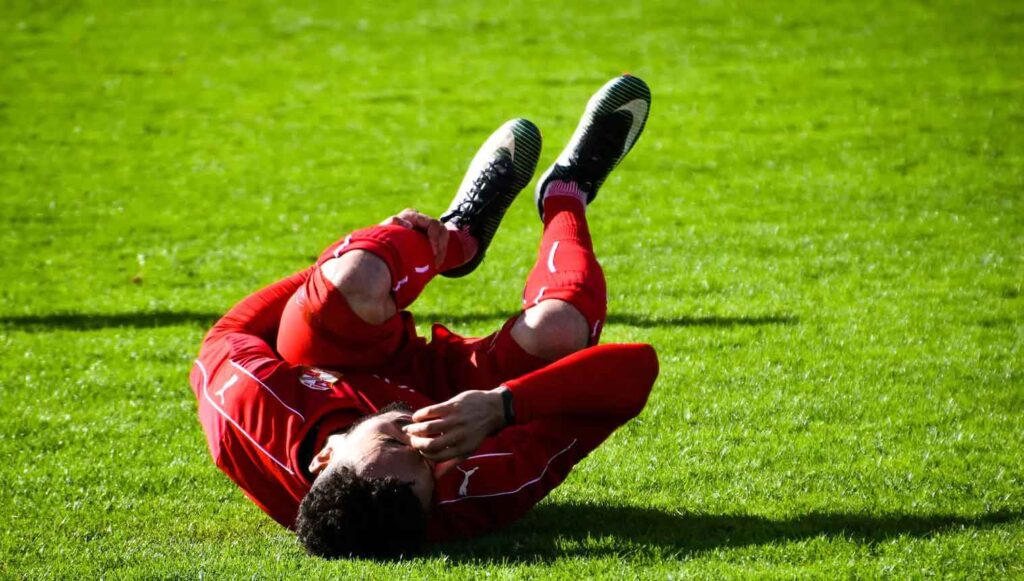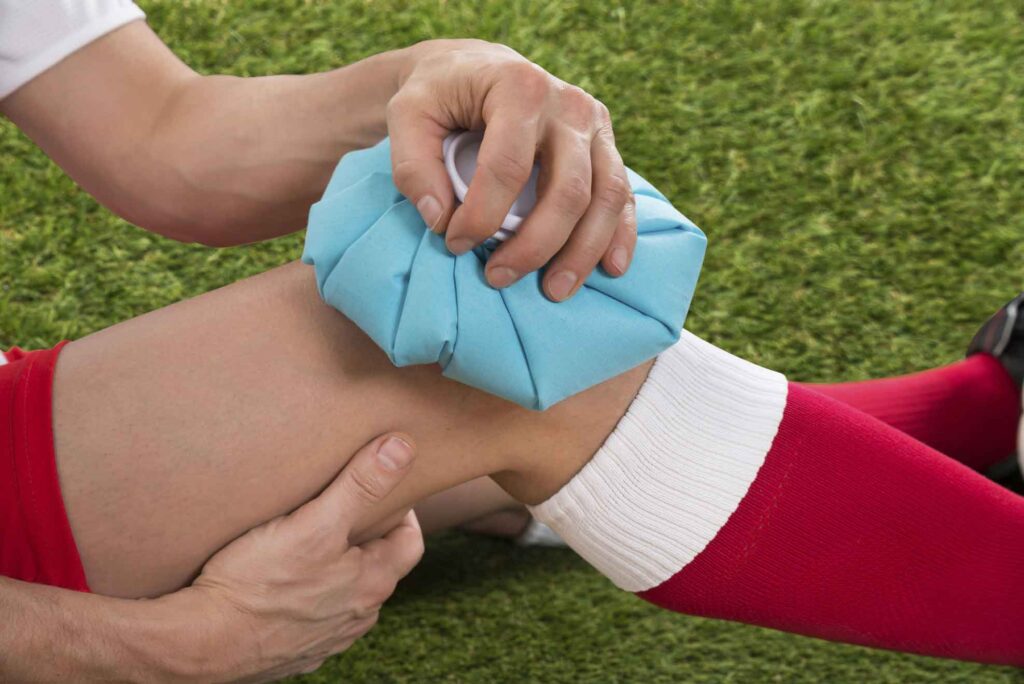Physical harm sustained when engaging in sports or fitness activities is referred to as a sports injury. They might range from less serious to more serious wounds. Depending on the person and the sport or activity they engage in, these injuries might happen at varying frequencies. Recovery may be impacted by the injury’s seriousness, the victim’s age, and general health. Sports injuries can occasionally have long-term effects or even permanently impair a person’s capacity to engage in athletic activity. Here are some instances of typical sports injuries.
Sprains and Strains
When a ligament, a fibrous tissue that connects bones, is stretched or ripped, an injury is called a sprain. Strains are wounds caused by the stretching or tearing of a tendon, the tissue that connects muscles to bones. Any muscle can be strained, although the back, neck, and legs are the most frequently affected areas.
Cramps
When the body is unable to produce enough energy, cramps, a type of muscle tiredness, develop. The causes of cramps include exhaustion, dehydration, and electrolyte abnormalities. Leg and foot cramps are the most frequent kind of muscle pain.
Torn Ligaments
When the tissue that joins the bones is totally torn or ruptured, injuries are called torn ligaments. As a result, the damaged joint may experience excruciating pain, swelling, and trouble moving. Falls, accidents, or violent twists or turns while participating in sports or physical exercise are common causes of ruptured ligaments.

Broken Bones
Broken bones happen when a bone either fractures through the surface (a fracture) or breaks its surface (a break), causing injury to the surrounding tissue. An injury to the joint caused by a shattered bone is referred to as a fracture dislocation. This may make moving the joint difficult and cause excruciating pain.
Concussion
When a blow to the head causes the brain to rock back and forth, a concussion happens and an abrupt change in brain function results. In contact sports, they are most prevalent. Consciousness loss, fuzziness, lightheadedness, memory issues, headaches, and nausea are some of the symptoms.
Hamstring Strain
An injury known as a hamstring strain occurs when one or more of the hamstring muscles at the rear of the leg are stretched or torn. Overuse, poor stretching, and muscular exhaustion are some of the common causes of hamstring strains. Back of thigh soreness, trouble walking, and swelling is signs of a hamstring strain.
TREATMENT OPTIONS FOR SPORTS INJURIES
Depending on the ailment, different sports injuries require different treatments. Here are a few common methods of treating sports injuries.
Stem Cell Therapy
In stem cell therapy, damaged body tissue is repaired or replaced using the patient’s own stem cells. Stem cell therapy can be utilized to fix harmed ligaments, tendons, and muscles in cases of sports injuries. Because stem cells may develop into many cell types, the body’s damaged tissue can be repaired and replaced.
Medication
By lowering pain, swelling, and inflammation, medication can speed up an athlete’s recovery after a sports injury. To assist reduce inflammation and pain, nonsteroidal anti-inflammatory medications (NSAIDs), such as ibuprofen or acetaminophen, can be taken orally or administered topically. In extreme circumstances, prescription painkillers could be required. It’s crucial to take the medication as prescribed and in the correct dosage.
Home remedies
Athletes can heal from sports injuries with the help of several home cures. These treatments consist of :
- Ice and rest :- Ice and resting the injured region can both assist to lessen pain and inflammation.
- Compression :- Wrapping the injured region with an elastic bandage might assist to support the wound and reduce swelling.
- Elevation :- Reducing swelling and enhancing circulation are two benefits of elevating the injured area above the heart.
- Massage :- It can help to increase mobility, decrease muscle spasms, and promote circulation in the affected area.
- Stretching :- Increasing flexibility and lowering the chance of reinjury are two benefits of stretching the injured area.
- Nutrition :- Eating a balanced, healthy diet helps support tissue regeneration and improve recovery.

Braces and Supports
A damaged joint or muscle is frequently supported with braces, splints, slings, wraps, and other supportive devices. These tools can aid in stabilizing the wounded area and promoting quicker tissue healing.
Surgery
Athletes can recover from sports injuries with the use of surgery, which can reconstruct or repair damaged tissue. This may entail treating fractures or other bone injuries in addition to mending torn ligaments, tendons, and muscles. Athletes who have sustained significant injuries that cannot be handled non-invasively may need surgery as a part of their recovery. Prior to electing to have surgery, one must carefully weigh the benefits and potential hazards.
Physical Therapy
Athletes who have sustained sporting injuries have the option of receiving physical therapy. For those who have sustained injuries as a result of physical activity, physical therapy has many advantages, including the prevention of additional harm and complete rehabilitation of weight-bearing joints or torn muscles and tendons.
Athletes can recover rapidly and resume their sport or activity as soon as possible by receiving the proper treatment for sports injuries. For an orthopedics and regenerative medicine consultation, go to Specialty Care Clinics. To book an appointment call (469) 545-9983.
